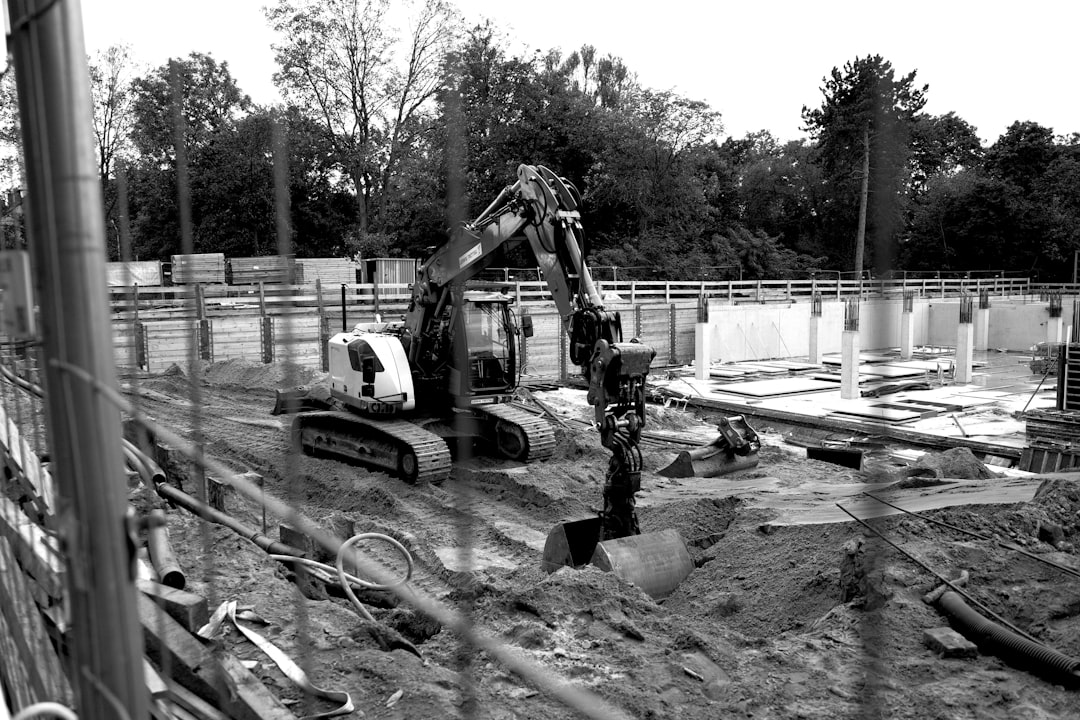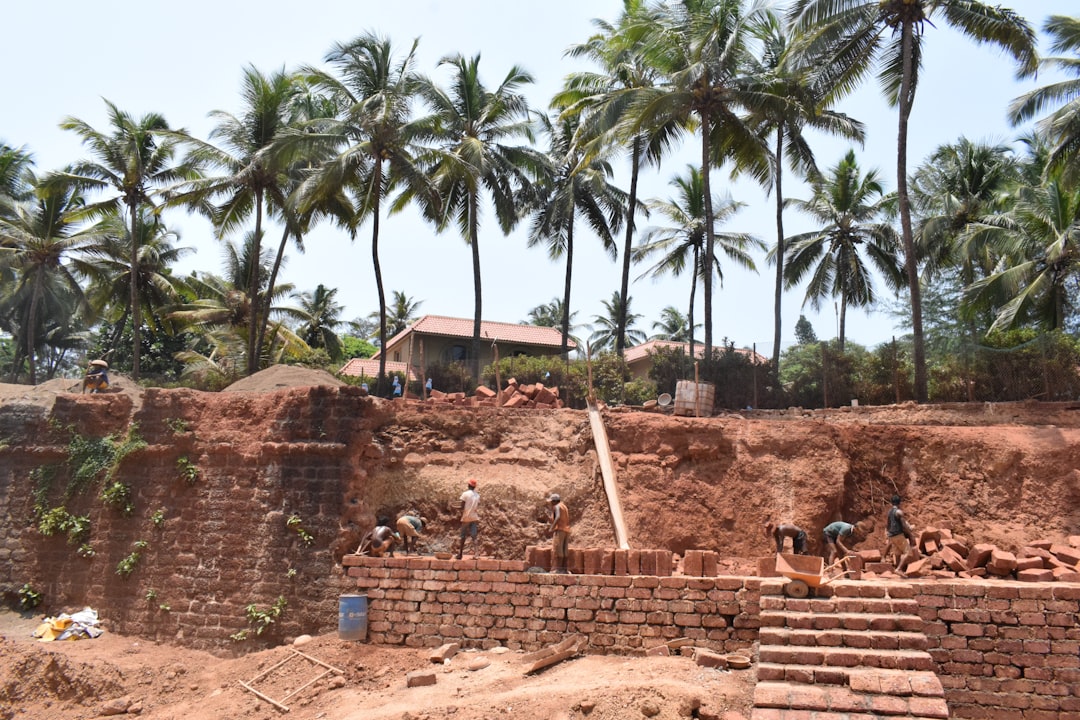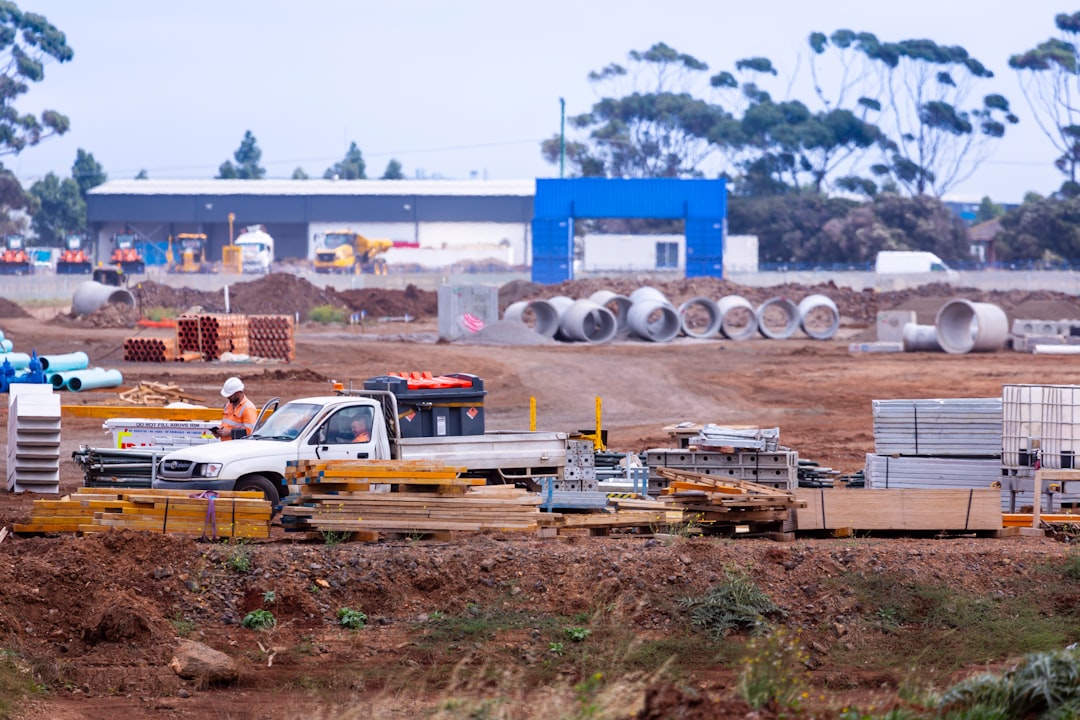

Engage prospects with a scan and streamline customer engagement with FREE QR code marketing tools by Sona – no strings attached!
Create a Free QR CodeFree consultation

No commitment

Engage prospects with a scan and streamline customer engagement with FREE QR code marketing tools by Sona – no strings attached!
Create a Free QR CodeFree consultation

No commitment
In today’s digitally driven construction environment, excavating contractors are under pressure to keep field crews aligned with fast-moving plans, safety requirements, and equipment needs. QR codes provide a reliable bridge from physical jobsites to digital systems that handle documentation, scheduling, and communication. With a quick scan, teams can access the latest plans, submit forms, and confirm compliance without downloading a new app or searching for paper binders.
The result is a simpler, faster way to work. By placing QR codes on equipment, in project trailers, at site entry points, and across training materials, contractors reduce delays caused by missing documents, strengthen safety adherence, and improve visibility into what is happening on the ground. Dynamic codes allow managers to update content centrally as project needs evolve, while scan analytics highlight what is being used and where there may be gaps.
This approach fits the realities of excavation work: distributed crews, multiple active sites, rotating subcontractors, and heavy machinery that cannot sit idle. As contractors modernize operations, QR codes turn every physical touchpoint into a digital entry point for process improvement, compliance, and performance tracking.

Historically, excavation jobsites have struggled with lagging access to critical information. Safety binders get buried in trailers, inspection logs go missing, and field teams often operate with outdated prints or procedures. QR codes remove these friction points by connecting crews to current, authoritative sources in seconds. A simple scan replaces the uncertainty of “which version is this?” with confidence that the information is accurate and accessible.
Begin by mapping the offline-to-online moments that cause the most friction. Paper forms for daily inspections, equipment logbooks, and job hazard analyses can be digitized and accessed by scanning codes on signage, gear, and machinery. Updated drawings, addendums, and RFIs can live behind dynamic QR codes on whiteboards and plan stations, ensuring that anyone on-site can verify the latest version immediately. These changes cut administrative time, reduce rework, and make compliance easier to prove.
For equipment logs, compliance tracking, or safety protocol access, QR codes eliminate guesswork and manual delays. A modern platform such as Sona QR supports dynamic content delivery, identity resolution, and deep integration with contractor workflows. This lets site leaders update procedures without reprinting, connect scans to individuals or assets, and keep a real-time pulse on engagement and compliance.

Excavation work is complex and often decentralized. Crews split across multiple sites, subcontractors rotate in and out, and heavy machinery schedules must be carefully orchestrated. In this environment, paper-based systems break down quickly, and email updates rarely reach everyone who needs them at the right time. QR codes resolve these challenges by bringing the latest information to the exact point of need, whether that is a skid steer, a trench box, or the site gate.
Speed and simplicity are key. No one in the field wants to install a new app or hunt through inboxes. A QR code connects the moment of need to a precise action: open the SOP, complete the inspection, pull the updated plan, or check equipment availability. Because codes can be dynamic, they point to the latest content without changing the physical sticker or sign, which prevents outdated instructions from circulating.
By turning every physical artifact into a digital touchpoint, QR codes reduce uncertainty and prevent siloed information. They also allow rapid alignment with regulatory changes and client demands, which is crucial in a field where safety and schedule performance carry significant financial impact.
Excavating contractors can benefit from several QR formats, each matching a common jobsite need. Choosing the right format ensures that scans trigger the best next step with minimal friction.
Dynamic QR codes are often the best fit for construction, since project content changes quickly. With Sona QR, contractors can generate any of these formats, update them centrally, and connect scan activity to CRM or project tools. Static codes are suitable for unchanging resources like company-wide safety posters or evergreen policy references.

Opportunities often hide in the handoffs between the field and the office. When a maintenance log is missing, a tool is unavailable, or a crew misses a schedule change, value is lost. Embedding QR codes across the operation creates clear pathways for action and insight at those handoffs.
Start with the highest-friction moments. Site gates can become reliable check-in points with QR-enabled digital safety plans. Equipment can carry scannable service histories and request forms that tie directly to maintenance queues. Project trailers can host QR access to the authoritative set of drawings and the live schedule. Each scan leaves a trail of evidence that the team is aligned and compliant.
These placements create a closed loop between intent and action. Crews operate with confidence, and managers gain new visibility into usage patterns and pain points. Over time, these insights guide process improvements that lift productivity and reduce risk.

QR code deployments succeed when they map directly to daily realities. The following use cases reflect common excavation workflows where access and accountability matter most. They are practical to implement and deliver measurable benefits within weeks of deployment.
Each use case should be backed by a clear business outcome. This keeps teams focused on why they are scanning and helps leadership measure impact. When paired with dynamic content and integrated analytics, these use cases become durable parts of the operating system for field and office collaboration.
Every scan captures intent and context. In an excavation setting, those signals reveal which crews are engaging with safety content, which assets are drawing the most maintenance attention, and which subcontractors consistently access project documents. By using unique QR codes for each asset, location, and use case, you create an audience map that supports targeted follow-up and smarter resource allocation.
Segmentation is practical at the jobsite level. Codes can be labeled by project phase, crew type, or equipment category. This lets operations leaders identify where additional training is needed, which zones experience recurring issues, and where to invest in coaching or spare parts. It also supports business development and recruiting by identifying which prospects or trades engage with your materials the most.
With Sona QR, these segments are created automatically from scan data. You gain a reliable, privacy-conscious way to tailor communication and support based on real behavior rather than assumptions.
Excavating contractors communicate across many channels, both operational and promotional. QR codes unify these efforts by turning offline moments into measurable digital interactions. This is as relevant to recruiting and vendor management as it is to winning new bids or coordinating on-site communication.
The key is consistency. Codes should carry a clear benefit-driven call to action, recognizable visual framing, and destination pages designed for mobile users. When these elements are standardized across print collateral, signage, and equipment labels, stakeholders learn to trust the experience and adoption rises.
A unified QR platform such as Sona QR centralizes code creation, branding, and analytics. This keeps your identity consistent, your data clean, and your integrations synchronized across channels.
Launching a QR initiative is straightforward, but the best results come from intentional planning and iteration. Treat your deployment like a project: define outcomes, prototype in a controlled environment, monitor usage, and scale with lessons learned. In excavation, start where the payback is fastest, such as safety checklists and equipment maintenance.
Below is a practical workflow you can follow. Each step includes guidance, examples, and tips tailored for field conditions. Use it to align stakeholders from safety, operations, and the shop, then build momentum with quick wins before expanding.
A short pilot often generates the data and momentum needed for broader buy-in. Share early results with leadership and site supervisors, then expand the use cases that produce the clearest value.
The true power of QR codes is not the scan itself but the actions and outcomes that follow. For excavating contractors, that translates to faster equipment turnaround, higher safety compliance, and fewer schedule impacts from miscommunication. Analytics turn anecdotal wins into measured improvements that stand up in budget and client conversations. For a deeper framework, read Sona’s blog post 'The Essential Guide to Offline Attribution: Maximizing ROI Through Offline Channels'.
Think about tracking in layers. Start with scan counts and locations, then move to completion rates for forms and checklists. Link those completions to outcomes, such as reduction in noncompliance incidents, fewer repeat repairs, or shorter approval cycles. Over time, establish benchmarks like scan-to-completion rate, time-to-first-scan for new codes, and engagement by crew or subcontractor.
Sona QR captures scan activity and passes it to Sona.com for attribution and journey analytics. Together, they connect anonymous scans to known contacts through identity resolution, correlate multi-touch engagement, and attribute pipeline or cost avoidance to QR-driven interactions. The outcome is a defensible story of how modern access translates into schedule performance and safer operations.
QR programs grow best through disciplined iteration. Start with the most visible and valuable workflows, capture data, and then extend to adjacent processes that share the same users or surfaces. Training and communication play an outsized role, since crews must understand both how and why to scan.
Equip supervisors with talking points and a quick demonstration during toolbox talks. Keep messaging consistent on stickers and signs so that scanning feels familiar across sites. Above all, connect the dots for field teams by showing how QR-enabled workflows reduce their friction and improve safety.
You can start creating QR codes for free with Sona QR. The platform integrates with common contractor tools and makes it simple to scale from a single site to a full fleet.

Concrete improvements show up quickly when QR codes are woven into daily routines. Contractors report fewer missed inspections, faster maintenance cycles, and stronger alignment across crews. Success tends to compound as teams gain confidence and expect to find everything they need one scan away.
Replicable wins include measurable lifts in safety compliance, reductions in unplanned downtime, and higher accuracy in documentation handoffs. The following examples illustrate how straightforward deployments can produce outsize value on fast-moving jobsites.
To extend value, add QR-powered feedback loops. End-user forms triggered by scans let crews flag bottlenecks, confusing instructions, or chronic equipment issues. These inputs convert passive complaints into a pipeline of continuous improvement ideas. Over time, that data supports process refinements that drive reliability, morale, and client satisfaction.
The difference between an effective QR rollout and a forgettable one often comes down to details. Durable labels, smart placement, and clear CTAs make scanning habitual. Conversely, poor lighting, blocked visibility, or generic destinations lead to quick drop-off and lost credibility.
Set a cadence for content reviews and code audits to ensure destinations stay current. Retire codes that no longer serve a purpose and consolidate redundant destinations to keep the experience clean. Pair rollouts with quick training moments and reinforce the purpose of each scan so crews know exactly what they will get in return.
Expert quote: “Implementing QR codes has completely modernized our fleet and safety processes. Adoption skyrocketed once our teams saw how easy it was to access everything they needed from a single scan.” – Operations Manager, Established Excavating Contractor
ROI spotlight: Contractors report up to a 25 percent reduction in safety noncompliance incidents and measurable administrative time savings after digitizing key documents and tracking engagement through scan analytics. These gains translate into fewer disruptions, tighter schedules, and a clear narrative for clients and auditors.
Time, safety, and cost control are the daily pressure points for excavating contractors. QR codes address each by simplifying access to information, streamlining compliance, and capturing data that informs better decisions. Scans replace slow manual routines with instant clarity, whether the task is reviewing a safety plan, pulling a current drawing, or opening a maintenance ticket.
By embracing QR-enabled workflows tailored for excavation, every surface becomes a reliable onramp to digital resources and every scan becomes a signal you can measure. With a platform like Sona QR and the analytics capabilities of Sona.com, contractors can standardize access, integrate scan data with their systems, and connect real-world engagement to outcomes such as reduced downtime and improved safety. For broader context, see Sona’s blog post 'The Importance of Accurate Revenue Attribution'. The path forward is practical and achievable: start with one high-impact use case, measure the results, and scale what works across your sites and fleet.
QR codes have revolutionized the excavating contractors industry by transforming traditional site access and information sharing into seamless, measurable interactions. Whether it’s streamlining equipment tracking, enabling instant site updates, or improving communication with clients and subcontractors, QR codes replace cumbersome paperwork with quick, mobile-friendly scans that capture real-time data to boost operational efficiency and project transparency.
Imagine instantly providing your clients with up-to-date project status, safety documents, or equipment logs—all accessible through a simple scan—while gaining valuable insights into engagement and workflow bottlenecks. With Sona QR, you can create dynamic, trackable QR codes in seconds, update content on the fly without reprinting, and connect every scan directly to your project management and billing systems. No more lost information or delays—just smarter, faster, and more accountable excavating operations.
Start for free with Sona QR today and turn every scan into a streamlined process, a satisfied client, or a completed project milestone.
Choose a reliable excavating contractor by evaluating their ability to modernize operations, maintain safety compliance, ensure clear communication across multiple sites, and effectively use technology like QR codes to streamline workflows and improve project visibility.
Excavating contractors provide services including equipment maintenance and tracking, safety protocol management, project documentation access, coordination of subcontractors, and efficient handling of multiple active job sites with heavy machinery.
QR codes improve efficiency by connecting field crews to up-to-date plans, safety checklists, equipment logs, and communication tools instantly, reducing paperwork delays, enabling real-time compliance tracking, and allowing dynamic content updates without reprinting materials.
Excavating contractors should follow safety measures such as providing digital access to job hazard analyses, emergency response plans, daily safety checklists, PPE issuance tracking, and ensuring crews acknowledge site-specific hazard briefings through QR-enabled documentation.
Excavation contractors use technology like dynamic QR codes integrated with digital forms, scan analytics, and project management platforms to streamline communication, monitor compliance, track equipment maintenance, and provide real-time updates accessible directly on job sites.
Use Sona QR's trackable codes to improve customer acquisition and engagement today.
Create Your FREE Trackable QR Code in SecondsJoin results-focused teams combining Sona Platform automation with advanced Google Ads strategies to scale lead generation

Connect your existing CRM

Free Account Enrichment

No setup fees
No commitment required

Free consultation

Get a custom Google Ads roadmap for your business






Launch campaigns that generate qualified leads in 30 days or less.
